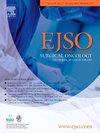Head-to-head comparison of nephrometry scores for partial nephrectomy: implications for clinical guidelines
IF 3.5
2区 医学
Q2 ONCOLOGY
引用次数: 0
Abstract
Introduction
Several nephrometry scores aim to predict partial nephrectomy (PN) outcomes. Since consensus regarding the best score is lacking, we performed a prospective head-to-head comparison of the most widely used.
Materials and methods
A dedicated uroradiologist prospectively reviewed preoperative CT scan to assign points to variables of interest included in RENAL, PADUA, SPARE, C-Index, DAP, and MAP score, in 202 renal cell carcinoma (RCC) surgical candidates. The primary outcome was surgical success, defined as PN completion, absence of grade > II Clavien-Dindo complications, ischemia time ≤20 min, and negative surgical margins. The secondary outcome was PN completion relative to radical nephrectomy (RN). Multivariable logistic regression (MLR) models predicted study outcomes after adjusting for age, gender, ECOG performance status, preoperative renal function, and surgical approach. Receiver operating characteristic (ROC) and area under the curve (AUC) compared each nephrometry accuracy.
Results
Surgical success and PN completion rates were 31 % and 60 %, respectively. At MLR, RENAL, PADUA, SPARE, DAP, and MAP scores independently predicted both outcomes (p < 0.001). The highest predictive accuracy for surgical success and PN completion was recorded for SPARE (AUC: 0.79 and 0.89). Intermediate accuracy was recorded for RENAL (AUC: 0.78 and 0.85), PADUA (AUC: 0.78 and 0.86), DAP (AUC: 0.76 and 0.85) and C-Index (AUC: 0.73 and 0.77). The lowest accuracy was recorded for MAP (AUC: 0.65 and 0.68).
Conclusion
Nephrometries are associated with surgical success and PN completion. In clinical practice, the use of SPARE should be privileged based on the highest predictive accuracy for both endpoints.
部分肾切除术肾测量评分的头对头比较:对临床指南的意义
几个肾测量评分旨在预测部分肾切除术(PN)的结果。由于缺乏关于最佳分数的共识,我们对最广泛使用的方法进行了前瞻性的正面比较。材料和方法一位专门的泌尿放射学家前瞻性地回顾了202例肾细胞癌(RCC)手术候选人的术前CT扫描,为肾、PADUA、SPARE、C-Index、DAP和MAP评分中感兴趣的变量分配点。主要结果是手术成功,定义为PN完成,没有等级>;II Clavien-Dindo并发症,缺血时间≤20min,手术切缘阴性。次要结果是相对于根治性肾切除术(RN)的肾切除术完成情况。多变量logistic回归(MLR)模型在调整了年龄、性别、ECOG表现状态、术前肾功能和手术方式后预测了研究结果。受试者工作特征(ROC)和曲线下面积(AUC)比较两种肾脏测量表的准确性。结果手术成功率31%,PN完成率60%。在MLR中,RENAL、PADUA、SPARE、DAP和MAP评分独立预测两种结果(p <;0.001)。SPARE对手术成功率和PN完成的预测准确率最高(AUC: 0.79和0.89)。肾脏(AUC: 0.78和0.85)、PADUA (AUC: 0.78和0.86)、DAP (AUC: 0.76和0.85)和C-Index (AUC: 0.73和0.77)的准确度为中等。MAP的准确度最低(AUC分别为0.65和0.68)。结论肾测量与手术成功和PN完成相关。在临床实践中,应优先使用基于两个终点的最高预测准确性的SPARE。
本文章由计算机程序翻译,如有差异,请以英文原文为准。
求助全文
约1分钟内获得全文
求助全文
来源期刊

Ejso
医学-外科
CiteScore
6.40
自引率
2.60%
发文量
1148
审稿时长
41 days
期刊介绍:
JSO - European Journal of Surgical Oncology ("the Journal of Cancer Surgery") is the Official Journal of the European Society of Surgical Oncology and BASO ~ the Association for Cancer Surgery.
The EJSO aims to advance surgical oncology research and practice through the publication of original research articles, review articles, editorials, debates and correspondence.
 求助内容:
求助内容: 应助结果提醒方式:
应助结果提醒方式:


